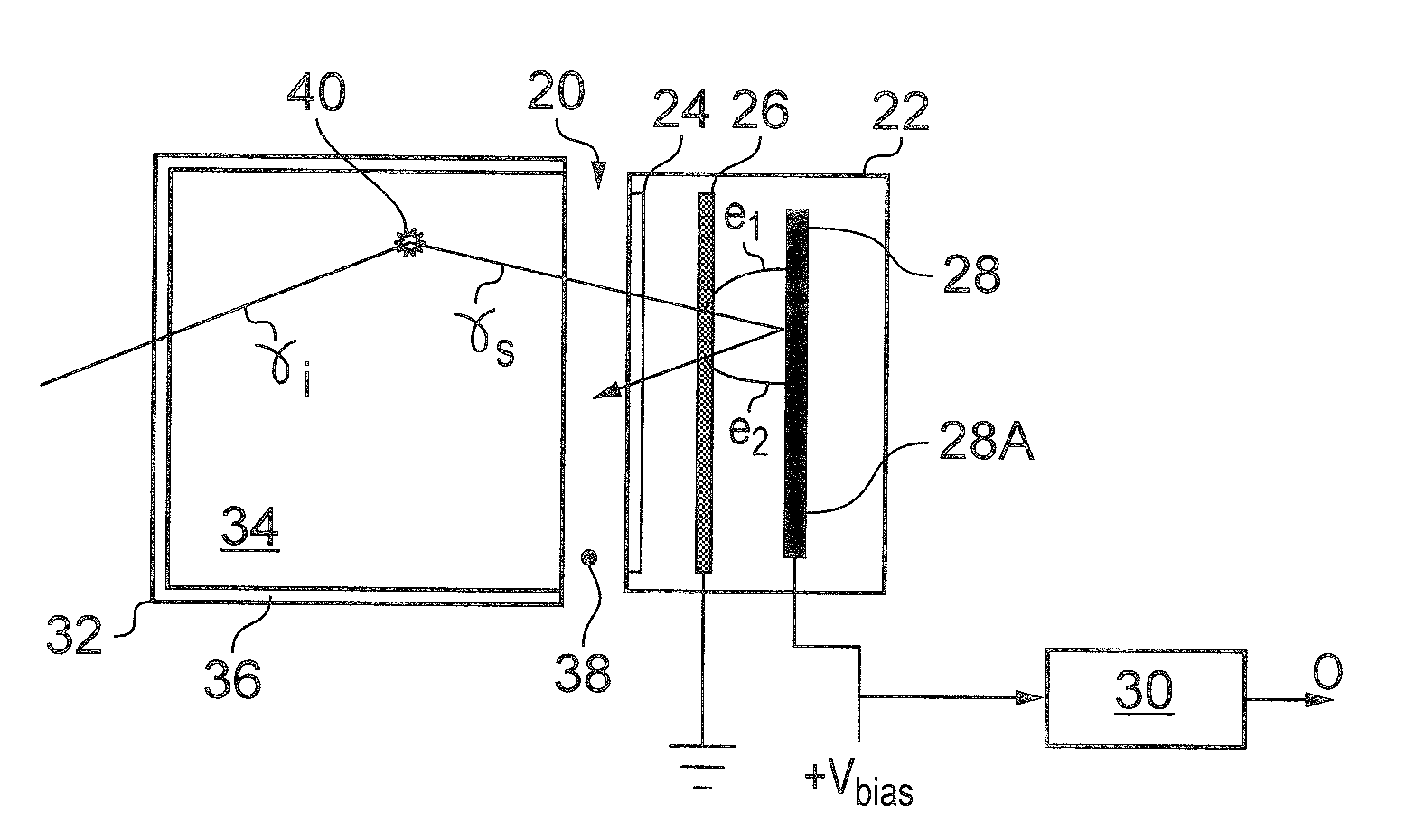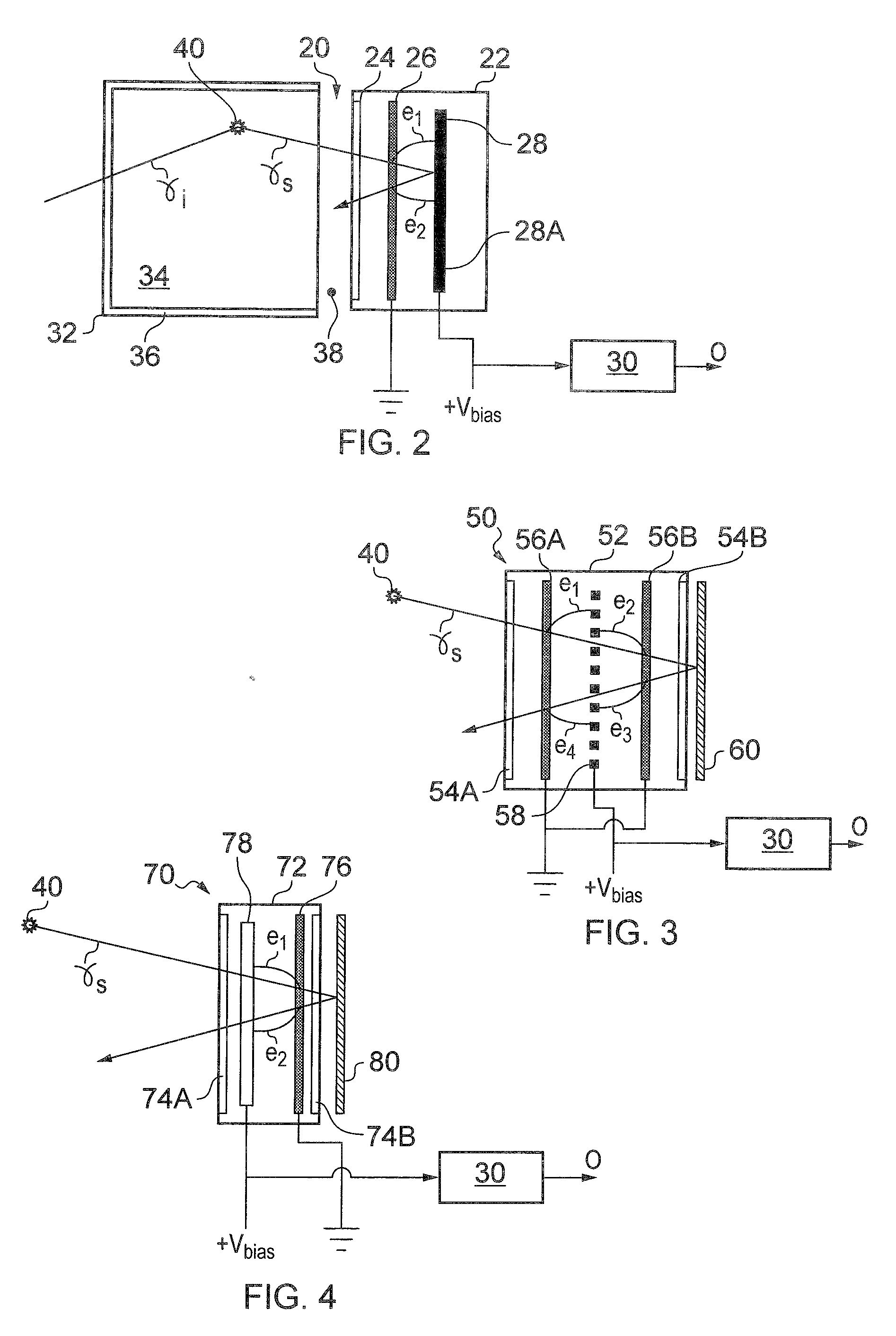Gamma-ray spectrometer
a gamma-ray spectrometer and gamma-ray technology, applied in the field of gamma-ray spectrometers, can solve the problems of inconvenient use, poor suitability of silicon-based photodetection diodes, and relatively large detectors
- Summary
- Abstract
- Description
- Claims
- Application Information
AI Technical Summary
Benefits of technology
Problems solved by technology
Method used
Image
Examples
Embodiment Construction
[0027]Spectral resolution is often the primary parameter of interest for scintillator-based gamma-ray spectrometers. Accordingly, for these applications at least, any new design of photodetector should preferably provide a spectral resolution that is broadly comparable to, or better than, that provided by conventional PMT detectors.
[0028]For a scintillator-based gamma-ray spectrometer, e.g. one using a PMT photodetector such as shown in FIG. 1, the achievable spectral resolution depends on a number of factors These include:
[0029](a) The light-yield of scintillation events. This is the typical number of optical scintillation photons γs generated in a gamma-ray interaction event per MeV of energy deposited in the scintillation crystal. Typical values are on the order of several tens of thousands of photons per MeV. For example, a conventional LaBr scintillator crystal might have a light yield of around 66000 γs / MeV, and a NaI(TI) scintillator crystal might have a light yield of around...
PUM
 Login to View More
Login to View More Abstract
Description
Claims
Application Information
 Login to View More
Login to View More - R&D
- Intellectual Property
- Life Sciences
- Materials
- Tech Scout
- Unparalleled Data Quality
- Higher Quality Content
- 60% Fewer Hallucinations
Browse by: Latest US Patents, China's latest patents, Technical Efficacy Thesaurus, Application Domain, Technology Topic, Popular Technical Reports.
© 2025 PatSnap. All rights reserved.Legal|Privacy policy|Modern Slavery Act Transparency Statement|Sitemap|About US| Contact US: help@patsnap.com



